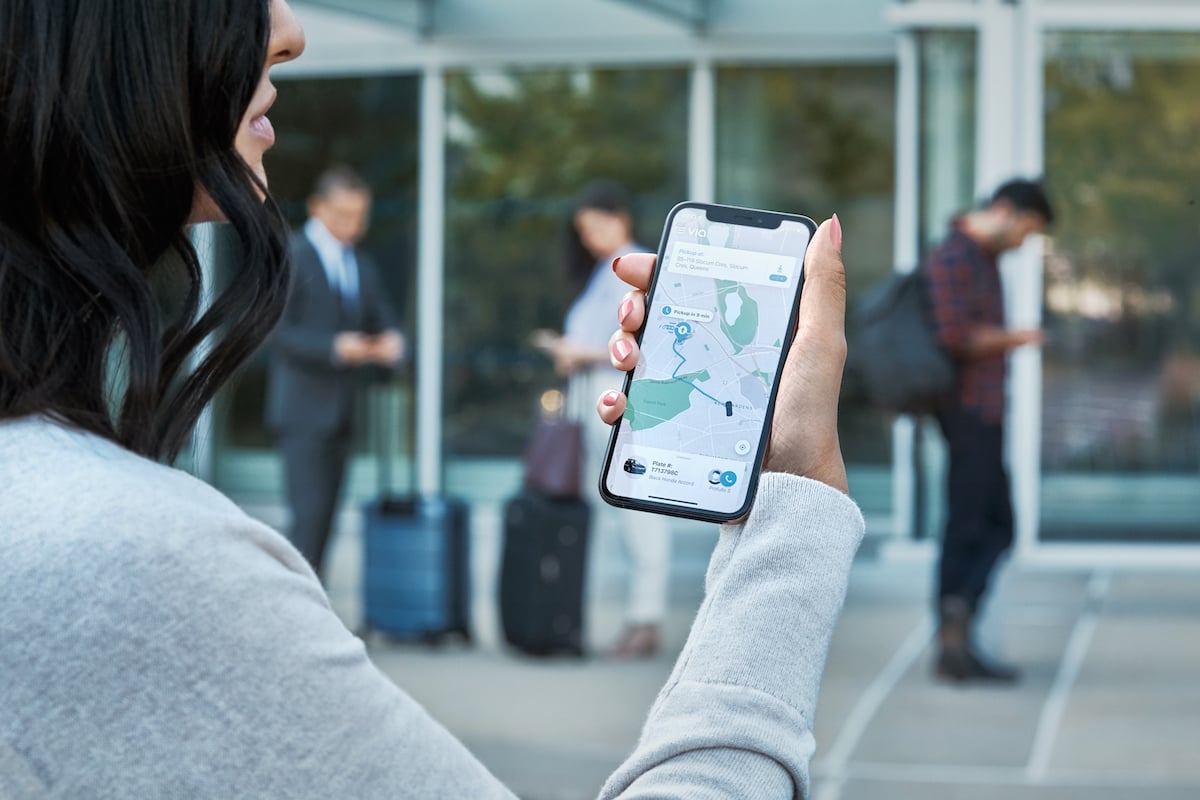For many travelers, the most challenging leg of the journey is not the too-long security line or the sprint to make a connection. It’s the gridlocked chaos of the ground transport pickup zone.
At first, ride-hailing services like Uber and Lyft were a breath of fresh air. Travelers could breeze past the taxi line and walk right to the curb for immediate pickup. But these services became so popular that they undermined their own appeal, transforming pickup zones into parking lots packed with idling cars and cabs all fighting for the same riders, steadily releasing harmful emissions.
Look at Boston-Logan International Airport, which saw a dramatic 29 percent increase in airport passengers between 2014-2019, now serving nearly 41 million people annually. According to a survey by the Massachusetts Port Authority in early 2019, more than 33 percent took a taxi or hailed a ride to get to or from the airport — close to 14 million passengers.
And government leaders are taking the rising trend seriously. The UK’s High Court recently ruled a proposed expansion at London’s Heathrow Airport was illegal because the plan did not adequately outline ways the airport planned to make changes in order to meet the government’s commitments to tackle the climate crisis. As global air travel continues to grow, congestion and emissions levels are reaching a breaking point, which is why airports are working to mitigate both of these issues through innovative transportation solutions.
Three common approaches
One popular option is procedural: changing pickup rules to relocate extra traffic. Last fall, for example, LAX (like many other airports) ended curbside pickup for ridesharing providers, moving the pickup zone to a distant lot that travelers can reach on foot or by shuttle, depending on their arrival terminal. The time to the satellite pick-up can take anywhere from eight to 30 minutes, but then flyers still have to wait for their car.
Another approach is financial: the Port Authority of New York and New Jersey (PANYNJ) recently added hefty per-pickup taxes for cabs at Newark Liberty, LaGuardia and JFK — along with significantly steeper taxes on ride-hailing services. Penalizing single occupancy ride share and taxi rides financially is a disincentive that may not work well, however, as many riders traveling regularly for business are less price sensitive compared to a personal travelers more incentivized to take public transit.
A third option is structural: cities can fund mass transit infrastructure to help travelers stay off the road. The Denver International Airport, for example, built a light rail line that connects travelers to the downtown area, allowing them to skip the pickup zone altogether. The project cost $1.2 billion and took five years to complete, which means cities would need a great deal of time and money, as well as confidence that the project would make a measurable dent in congestion.
None of these choices are perfect. Adjusting rules or prices is a temporary fix that might alleviate some congestion but inconveniences travelers in doing so. Building light rail or other fixed-route infrastructure is often a great way to move passengers, but the price tag will be unaffordable for many communities. Meanwhile, traffic congestion and vehicle emissions continue to rise. For all of these reasons, some airports are considering a fourth option — one that strikes a balance between ride-hailing and public transit in a single solution.
Clearing a lane for microtransit
Microtransit blends the familiarity of the airport shuttle with the science of real-time scheduling, giving riders the option to request a pickup through an app and then sharing their ride with a group of others who are headed in the same direction. The fast pickup helps riders avoid the long wait time, while sharing keeps per-ride costs low. Most importantly, microtransit can help airports immediately reduce congestion, single-rider trips, and emissions all in one fell swoop — without financing any new infrastructure.
LaGuardia, which serves 30 million flyers each year, is one of the first airports to test a microtransit service called LGA Connect. The pilot program, launched in a partnership between PANYNJ and the on-demand mobility company Via, offers passengers who book through the Via app a $15 flat-rate ride from LGA to Brooklyn, Manhattan, or Queens and a $20 rate to the Bronx and Staten Island.
Rides are available during airport operating hours. A recent review of the service affirmed that the flat rate is very attractive, considering the realities of surge pricing. In fact, at the time of the reviewer’s trip, shared Uber and Lyft prices ranged from $56 to $75. Other highlights included booking through an app, pickup within 5-10 minutes of booking, the ease of finding the pickup area, and the comfort of the large Mercedes Metris van.
The road ahead
Can microtransit succeed where other shuttle services haven’t? After all, SuperShuttle, which served travelers in more than 100 cities, shut down in late 2019, its ridership eroded by newer transportation network companies (TNC). The answer lies in what makes microtransit different. Namely, its ability to deploy immediately for much less than big-ticket infrastructure; the attractiveness to riders drawn to app-based ride-hailing; and the flexibility it offers for airports to use its intelligence (dynamic scheduling and routing) and its operations (vans and drivers).
Much like building an expensive new rail network or changing ridesharing pickup rules to relocate the extra traffic, microtransit is not a silver bullet. But it’s easy to see how well its unique capabilities align with the prevailing goals of reducing congestion and carbon emissions while giving flyers an easier, more affordable way to get where they’re going.




%206.png?width=71&height=47&name=The%20Buzz%20Blog%20Hero%20(1750%20x%201200%20px)%206.png)